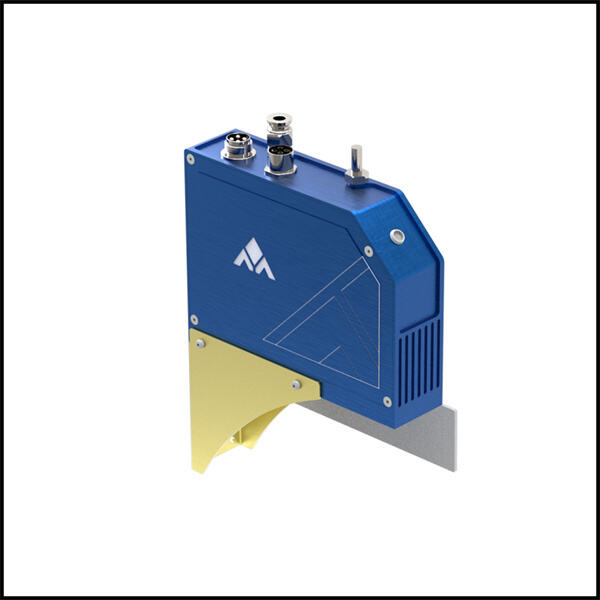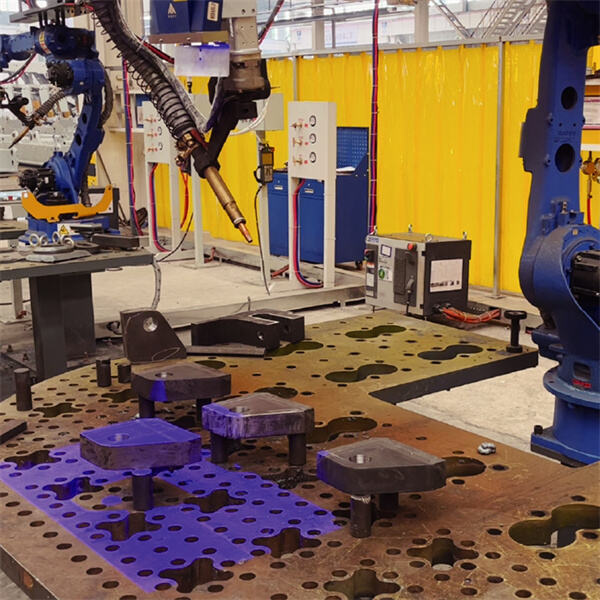Robots are incredible machines that can do all sorts of things. They can wander around, grab things and even speak to us. But you know what makes all of these cool actions possible? Sensors act like small robot eyes, ears, and noses that allow robots to hear, see, and smell what is surrounding them. Let’s take a closer look and see how sensors help robots do their cool jobs.
Think of a MINYUE ai robot trying to walk through a room with chairs and tables. If the robot lacks sensors, it may hit things or even trip. That would not be good. Vision and ultrasonic sensors are very useful sensors because they allow the robot to locate and identify objects on it is path. These sensors serve as the robot's eyes, allowing it to observe where it is going. This tactile sense allows the robot to carefully navigate around problems such as chairs or tables without getting stuck or crashing into objects. This skill enables robots to explore various environments, such as homes, schools, or parks, without making any mistakes or hitting anything.
Robot movement brings microsecond decisions to avoid hitting anything and reaching their goals. Real-time sensor output guides robots' decision making about which action to choose next. For instance, if a sensor detects an object immediately in front of the robot's line of movement, that information would be sent to the robot's brain in the form of signals, alerting the robot to stop, turn, or walk around the object. As a result, MINYUE artificially intelligent robots can continuously re-evaluate their surroundings, which means they can make ongoing critical adjustments that help them stay on the move—and safely. It is kind of like a game of dodge the obstacles and find the best path for the robot.

Do you know what roboticists do? Robot sensors such as MINYUE laser beam sensor are widely used for orienting as well as manipulating various objects. (The sensors in the robot’s hands, for example, can feel the dimensions or shape of an object, allowing it to grip it with the precise tightness and firmness.) This is super important because it means a robot can grab something too heavy or too light and it does not even know it, so it will drop it or crush it. Also, sensors can determine how heavy something is and how soft it is, allowing robots to grasp things delicately. These sensors enable robots to accurately pick up objects, assemble components, or even cut materials. This makes them super useful in all kinds of environments.

Robots, much like human beings, require maintenance, so treating your robot well would promote it is longevity as well. Sensors like high speed laser sensor can also assist robots in recognizing when they are starting to show signs of wear, or when something in the machine might not be functioning properly. That way, problems can get fixed before things become serious problems, robots. For instance, sensors constantly monitor how hot a robot’s motors are — and they can alert the people in charge if they become overheated. If something gets too hot, it might not work anymore or even break. Because problems are caught early, sensors keep robots in good health and functioning optimally.

Is not it cool if a robot can understand what we say or do? Sensors enable robots to detect and react to people and their activities. For example, if a robot has sensors in it is head, the sensors can see human faces and hear voices. This allows the robot to identify and correctly interact with humans in a friendly manner. Sensors can also detect hand movements or commands. This enables robots to obey instructions and accomplish tasks according to what the people want. This human-like behavior may allow robots to become companion-like figures for humans to engage with, creating a sense of interactivity and relationship.
Fast, accurate, completely No-Programming, high efficiency and high precision. It solves the complicated teaching process of traditional robots and saves the downtime of teaching process.
Beijing Minyue Technology Co.,LTD,as the world's leading high-tech enterprise of non-teaching intelligent application of industrial robots.We specialize in flexible intelligent manufacturing with our self-developed RobotSmart - Intelligent Decision Making System, SmartVision - Binocular Structured Light Vision System, and SmartEye - Laser Vsion Seam Tracking System. Provide a new generation of intelligent robot welding and cutting solutions.
Provide powerful welding robot front loading, side loading, inverted loading, gantry mounting, intelligent trajectory planning for multiple robots, multiple external axes, and positioner for cooperative work. Realize robot motion simulation, collision detection, singularity avoidance and axis limit detection.
Adopting the function of finding and tracking, scanning the weld seam, confirming the position and information of the weld seam, correcting the position of the weld seam between the 3D digital model drawing and the actual workpiece, and solving the problem of bias weld due to the error of incoming materials and thermal deformation.